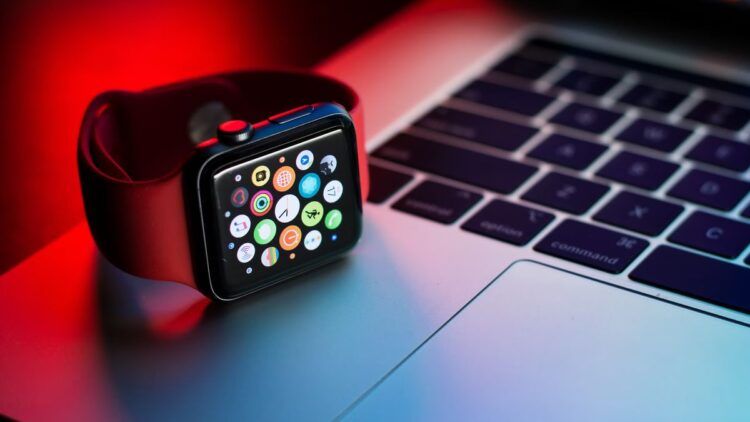The Cupertino firm is reportedly working on integrating noninvasive blood glucose monitoring technology into its Apple Watch lineup, according to a recent report by Bloomberg. This development could potentially alleviate the burden of painful needle pricks for people with diabetes (PWD) and even aid those with pre-diabetes in avoiding the development of the disease.
Why glucose monitoring is critical for diabetics?
Statistics suggest that one in 10 Americans suffer from diabetes, a condition where their body either fails to produce insulin or is unable to use it efficiently, leading to chronically high levels of glucose in the blood. This can result in serious complications, such as damage to the kidneys, heart, nerves, and eyes, leading to kidney and heart disease, vision loss, and even limb amputation over time.
While diet and exercise can assist people with diabetes in maintaining healthy blood sugar levels, additional insulin injections are often necessary to ensure safety. For individuals with type 1 diabetes, where the body does not produce insulin at all, daily insulin injections are essential for survival.
Nonetheless, it is critical to regularly monitor blood sugar levels, regardless of the type of diabetes one has. Typically, PWD measure their glucose levels several times daily by pricking a finger with a needle and using a tester to obtain a small blood sample.
The process of pricking a finger to obtain a small blood sample for glucose monitoring can be an unpleasant experience that causes anxiety in an estimated 30% of PWD. This anxiety has been linked to testing avoidance, which can lead to chronically high glucose levels and severe health problems.
To more effectively manage their diabetes, PWD require a continuous, pain-free way to monitor glucose levels, ensuring timely insulin administration and maintenance of safe blood sugar levels.

While promising research has been conducted in the area of continuous noninvasive blood glucose monitoring, and several commercial devices such as the Dexcom G6 exist that almost meet the criteria, they still contain a small needle that can cause some discomfort when applying a new sensor.
Thus, no one has yet managed to develop a truly noninvasive, continuous glucose monitor that is available on the market.
Apple Watch to come with a glucose monitoring tech in the future
Bloomberg has reported, citing anonymous insiders, that Apple is currently developing a noninvasive blood glucose monitoring device and ultimately aims to incorporate the technology into its popular Apple Watch. According to the sources, the system employs two technologies, namely, silicon photonics and optical absorption spectroscopy, to measure glucose levels by reflecting laser light into the skin’s underlying area.
Apple has purportedly trialed the technology with hundreds of people, and hundreds of engineers are now working on it at the company’s Exploratory Design Group, which Bloomberg likened to Google’s moonshot division, “X.”
Despite the claims made by anonymous insiders, Apple has yet to confirm the development of a noninvasive blood glucose monitoring device or its potential integration into the Apple Watch. While the sources indicated that the company had tested the technology under the guise of a startup called Avolonte Health, there is currently no publicly available information regarding the performance of the trials.
It’s worth noting that spectroscopy-based glucose monitoring is not a novel concept, and other companies have previously attempted to develop a commercial product using this approach. Nonetheless, we are still waiting for such a product to come to market.

In October of 2022, Optica interviewed John L. Smith, the former Chief Scientific Officer of LifeScan, a division of Johnson & Johnson that specialized in developing blood glucose monitoring systems. It is worth noting that Johnson has previously written a book on the topic of noninvasive glucose monitoring technology.
“To be quite candid, I don’t see anything that shows any greater promise than I saw 40 years ago, or 20 years ago, right now, in the optical measurement and spectroscopy areas. It has been investigated so many different ways, so many different times,” stated Johnson in his book.
It remains unclear whether Apple’s efforts will yield a successful noninvasive glucose monitoring system, as there is limited information available about the project’s progress. However, Bloomberg’s sources have revealed that the tech giant has invested hundreds of millions of dollars into the project and is actively working on developing a proof-of-concept prototype.
Apple’s goal is reportedly to create a device about the size of an iPhone that could be strapped to a person’s bicep, but the company will likely face numerous technical challenges in achieving this vision.
In addition to benefiting people with diabetes, integrating blood glucose monitoring into smartwatches could have a positive impact on people with prediabetes or elevated blood sugar levels.
By providing an easy and painless way to monitor glucose levels, smartwatches could encourage more people to keep track of their levels and potentially intervene early to avoid developing type 2 diabetes.
This could be particularly beneficial given that the CDC estimates over 80% of the 100 million American adults with prediabetes are unaware they have the condition. While the idea of wearing a device the size of an iPhone on one’s bicep may not be comfortable, the ultimate goal for Apple is to integrate the technology into its popular Apple Watch.





